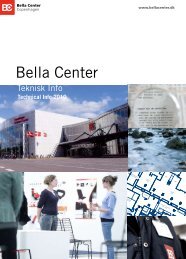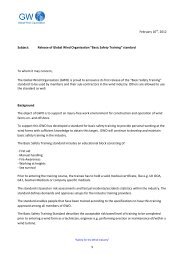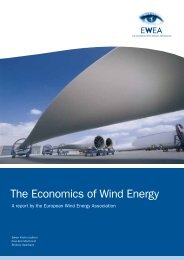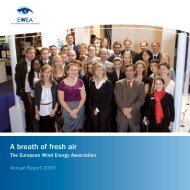Offshore Electricity Infrastructure in Europe - European Wind Energy ...
Offshore Electricity Infrastructure in Europe - European Wind Energy ...
Offshore Electricity Infrastructure in Europe - European Wind Energy ...
Create successful ePaper yourself
Turn your PDF publications into a flip-book with our unique Google optimized e-Paper software.
Tim<strong>in</strong>g of technology development<br />
The tim<strong>in</strong>g of technology development has been found<br />
by the <strong>Offshore</strong>Grid consortium to be a large challenge<br />
for an offshore grid. There is a variety of new<br />
technologies needed for safe and secure offshore grid<br />
operation, particularly with respect to power flow control<br />
mechanisms, security issues, <strong>in</strong>creased capacity<br />
and reduction of energy losses.<br />
The key issue to be tackled is multi-term<strong>in</strong>al operation.<br />
So far, fast DC breakers are not fully developed<br />
and multi-term<strong>in</strong>al operation is not possible. In case<br />
of an offshore grid failure the complete grid has to be<br />
de-energised, the fault has to be isolated, and only<br />
then can the offshore grid be loaded aga<strong>in</strong>. This can<br />
also have serious impact on the onshore grid stability<br />
due to frequency problems. Furthermore it should<br />
be highlighted that TSOs do not have any experience<br />
with multi-term<strong>in</strong>al operation based on HVDC VSC<br />
technology.<br />
The tim<strong>in</strong>g of technology development will depend on<br />
the likely order value, which <strong>in</strong> turn depends on the<br />
connection method the offshore <strong>in</strong>dustry adopts. For<br />
example the adoption of a model whereby offshore<br />
w<strong>in</strong>d farms are clustered around offshore transmission<br />
hubs may drive an <strong>in</strong>crease <strong>in</strong> the capacity of<br />
<strong>in</strong>dividual VSC converter stations, whereas a cont<strong>in</strong>uation<br />
of the trend of <strong>in</strong>dividual w<strong>in</strong>d farm connection<br />
may not.<br />
<strong>Offshore</strong>Grid – F<strong>in</strong>al Report<br />
Commodity prices<br />
The overall cost of the offshore grid is largely <strong>in</strong>fluenced<br />
by the cost of the key raw materials, most<br />
notably the raw materials used <strong>in</strong> HVDC and HVAC<br />
subsea cables, as they form by far the largest component<br />
of the offshore grid. Two metals tend to be used<br />
to form the conductors <strong>in</strong> power cables, copper and<br />
alum<strong>in</strong>ium. The superior conductivity of copper means<br />
that more electric current (and hence more power) can<br />
be passed down a copper conductor of certa<strong>in</strong> cross<br />
sectional area than down an alum<strong>in</strong>ium conductor of<br />
the same size. This means that copper cables are<br />
smaller than the equivalent alum<strong>in</strong>ium cables which<br />
can make transport and <strong>in</strong>stallation easier, both important<br />
and expensive considerations <strong>in</strong> the offshore<br />
environment. The surge <strong>in</strong> global demand for copper<br />
however has not only driven the price of copper to<br />
peak levels, but also <strong>in</strong>troduced significant volatility <strong>in</strong><br />
the pric<strong>in</strong>g (See Figure 5.1 below). Any manufacturer<br />
us<strong>in</strong>g significant amounts of copper as a raw material<br />
would obviously offset this price risk <strong>in</strong> the equipment<br />
quotes, potentially push<strong>in</strong>g up the price of many of<br />
the pieces of equipment required for an offshore grid.<br />
Indeed many recent subsea cable orders have been<br />
specified with alum<strong>in</strong>ium, primarily because of the<br />
high copper price.<br />
At the aggregate level, the future development of key<br />
commodity prices is assessed by the <strong>Offshore</strong>Grid<br />
consortium as a medium barrier for an offshore grid.<br />
FIGURE 5.1: PRIcE OF cOPPER ON ThE lONdON METAl EXchANGE OvER ThE lAST TWENTY FIvE YEARS (SOURcE: WIkIPEdIA FROM<br />
lME SOURcE dATA)<br />
83









